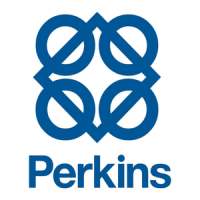
Do you have a question about the Perkins L4 and is the answer not in the manual?
Details the one-piece high duty alloy iron casting with flanged wet liners.
Describes the alloy iron casting, overhead valves, and combustion chamber.
Explains the alloy steel stamping crankshaft and its three pre-finished shell bearings.
Covers light aluminium alloy pistons with compression and scraper rings.
Details the high-pressure force feed lubrication system.
Describes the unit type fuel pump and atomiser placement.
Explains water circulation via centrifugal pump, belt-driven dynamo and fan.
Details the air cleaner system and its connection to the venturi.
Describes the hand pump, induction heater, and starter for cold conditions.
Covers checks for radiator, sump oil, fuel, battery, and connections.
Details procedures for bleeding air from pressure and gravity fed fuel systems.
Explains the operation of hand pump, induction heater, and starter.
Procedure for starting the engine using the decompressor lever.
Instructions on how to operate the engine stop control.
Addresses issues like no fuel at atomisers, low compression, and sticking valves.
Explains potential causes like worn rings, cylinders, or leaky valves.
Details testing procedures for atomisers and potential faults.
Emphasizes the importance of clean fuel oil and potential issues.
Outlines initial checks after engine delivery or extended storage.
Basic daily checks including oil level and water level.
Maintenance tasks required every 50 operating hours.
Maintenance tasks required every 250 operating hours.
Maintenance tasks required every 500 operating hours.
Maintenance tasks required every 1,000 operating hours.
Explains the function and types of air filters (Oil Bath, Air Maze).
Highlights the importance of clean fuel oil and filter types (Water Trap, Pre-filter).
Covers oil filter types (Filler Strainer, Sump Strainer, Main Filter) and their maintenance.
Steps to take before removing the cylinder head.
Detailed procedure for removing the cylinder head assembly.
Describes the process of reconditioning valves and valve seats.
Guidance on inspecting valve stems, guides, and seats for wear.
Instructions for examining and replacing valve guides.
Steps for dismantling pistons and connecting rods from cylinders.
Procedure for assembling pistons, rods, and gudgeon pins.
Instructions for washing and fitting new piston rings.
Details on checking piston height relative to the cylinder block.
Method for removing cylinder liners from the block.
Steps for installing new cylinder liners, including sealing rings.
Procedure for removing the crankshaft assembly.
Explains examination for wear and suitability for regrinding.
Details on checking journal diameters and ovality.
Steps for removing the camshaft from the engine.
Procedure for removing the fuel pump from the timing case.
Explains the timing gear markings for re-setting engine timing.
Step-by-step guide to restoring engine timing.
Procedures for setting and checking engine valve timing.
Instructions for timing the fuel pump in conjunction with the engine.
Describes the path of oil through the system to bearings.
Details expected oil pressure and troubleshooting steps.
Procedure for maintaining the oil pump suction strainer.
Instructions for removing the engine oil sump.
Steps for removing and reinstalling the water pump.
Detailed instructions for disassembling the water pump.
How to check fan and dynamo belt tension.
Procedures for adjusting the fan and dynamo belt tension.
Explains the function and operation of the fuel lift pump.
Details the precision workings of the fuel pump.
Describes the governor's role in controlling engine speed.
Covers the function and components of the fuel atomisers.
Details changes and specifications for modified atomisers.
Guide for adjusting the mechanical governor.
Steps for testing the governor's performance on a test bench.
Procedure for checking and adjusting flywheel housing bore alignment.
Steps for removing the engine flywheel.
Method for verifying flywheel alignment after installation.
Detailed tables of dimensions and tolerances for engine components during overhauls.
Specifications and ratings for L4 Marine engines.
Distinguishes between pneumatic and mechanical governing types.
Discusses mechanical and hydraulic gearboxes used with L4 Marine engines.
Explains the direct sea water cooling system with rubber impeller pump.
Describes the closed-circuit keel cooling system.
Details the heat exchanger system using separate pumps.